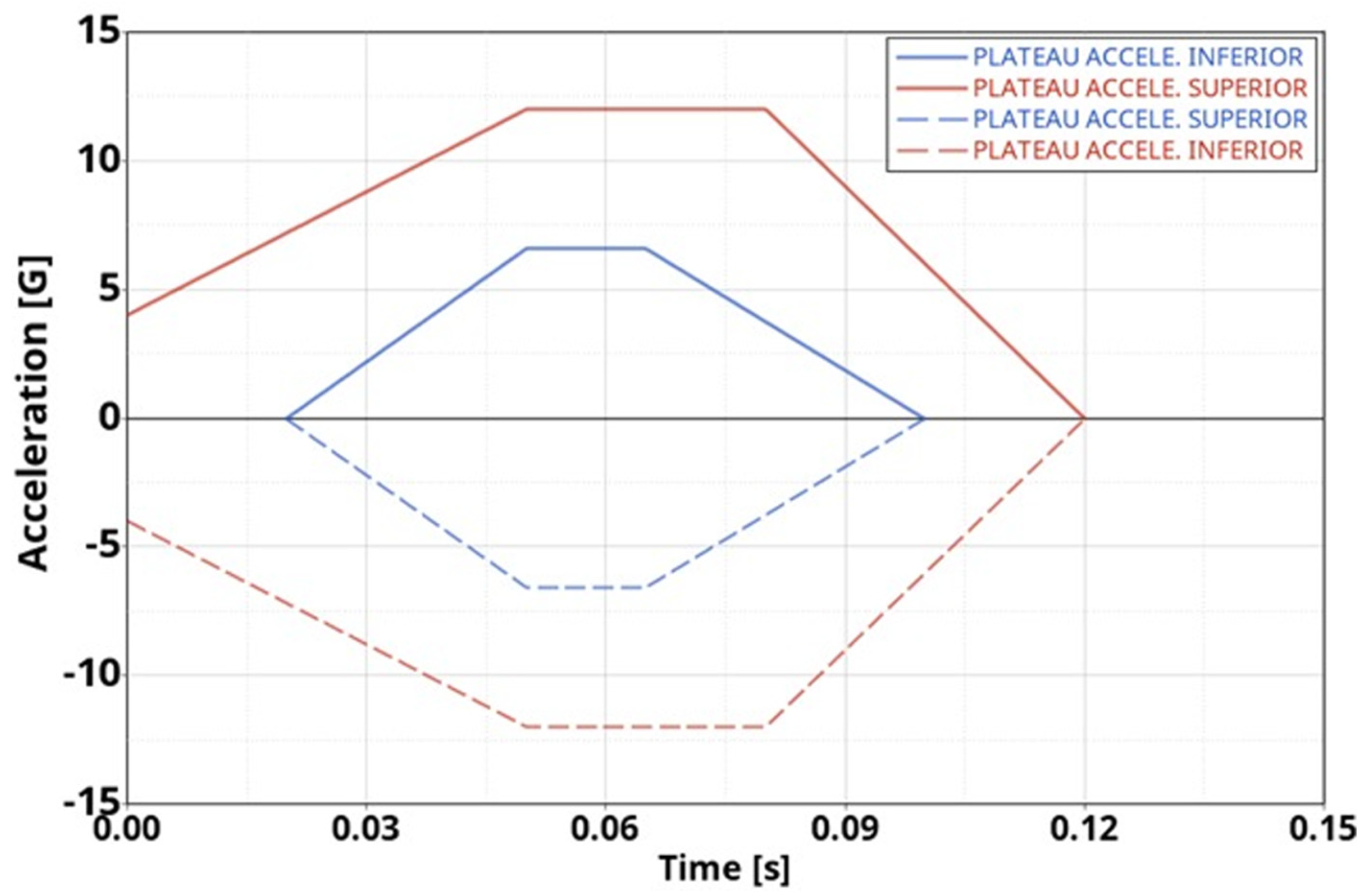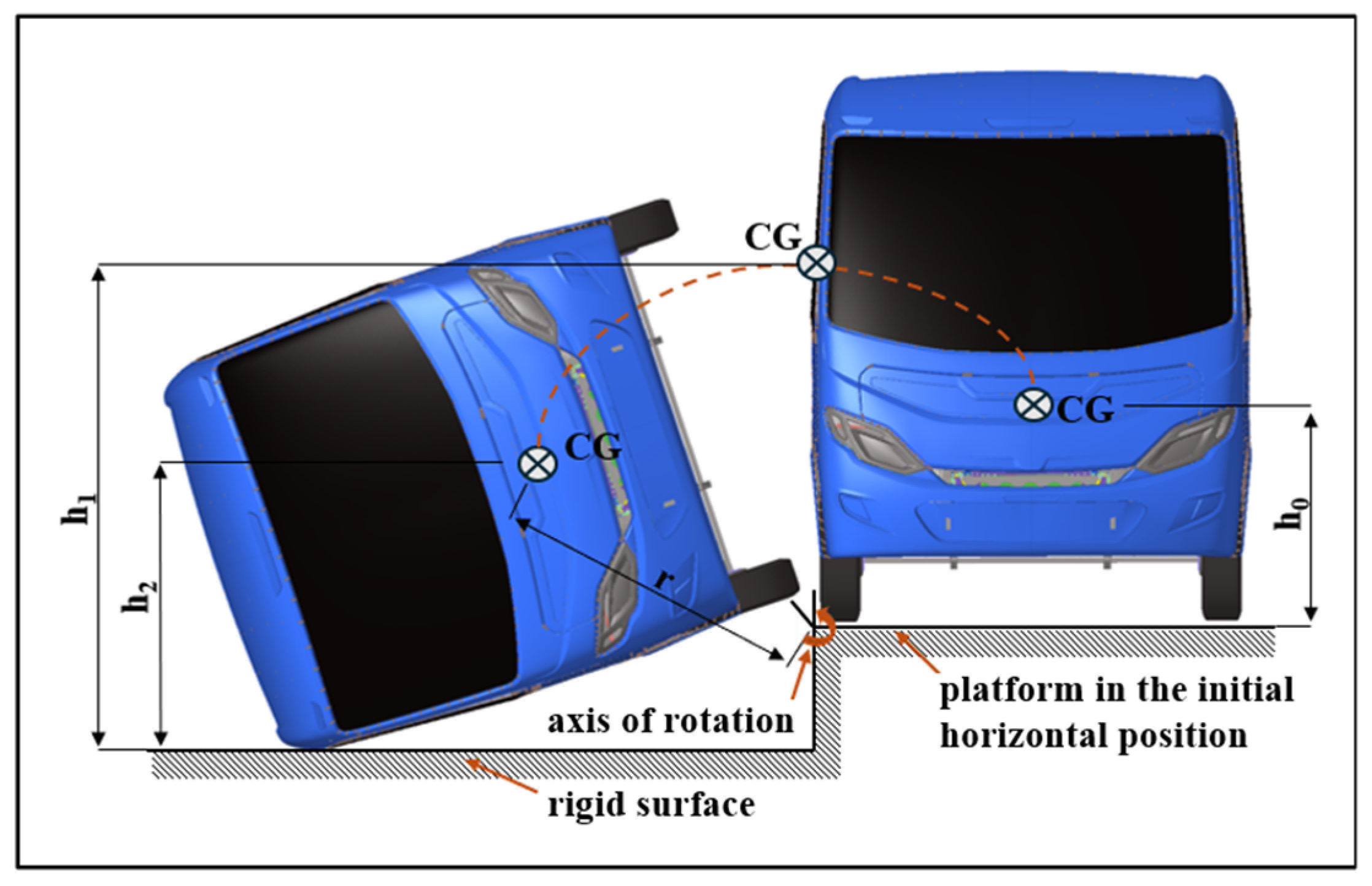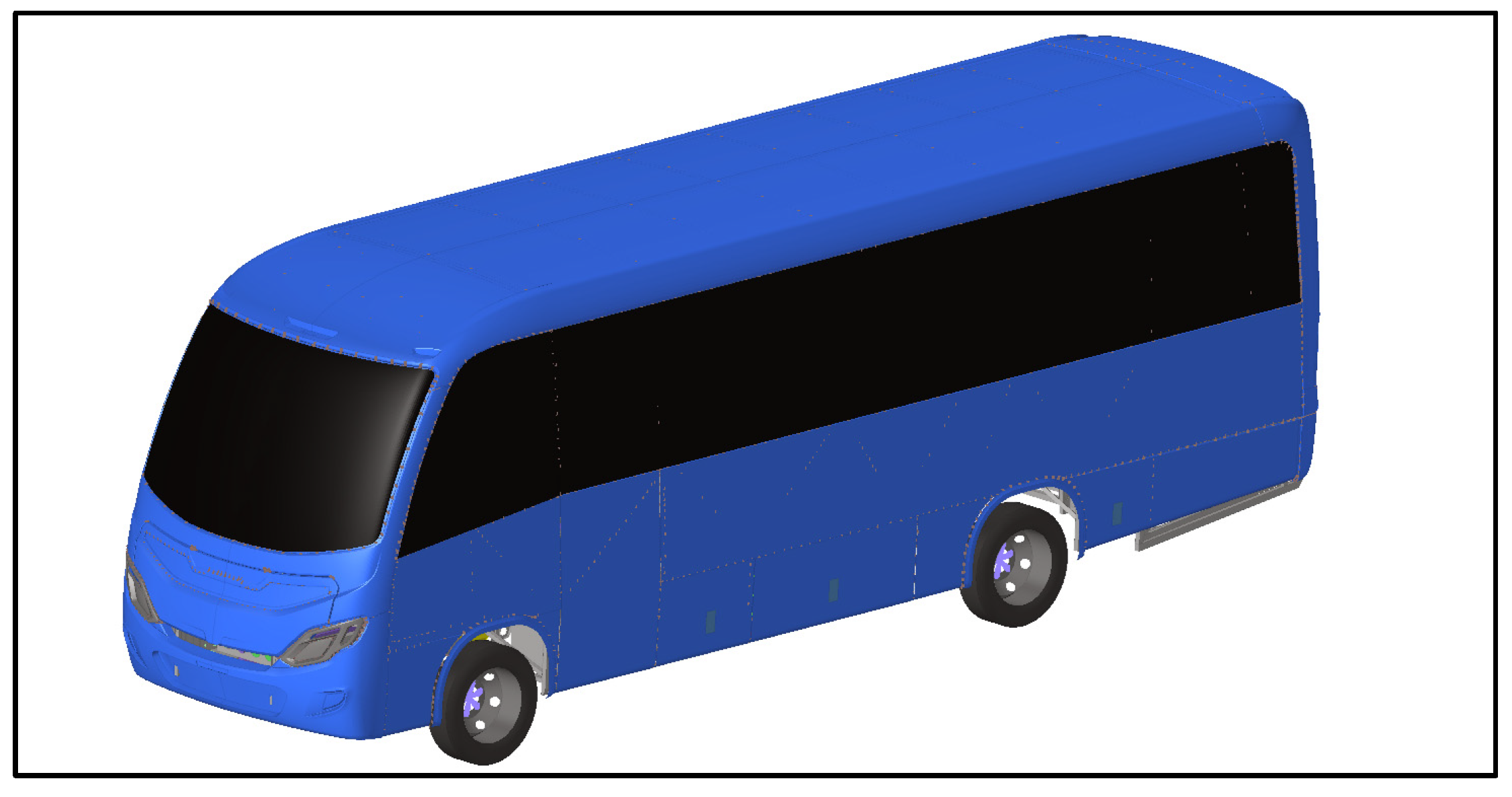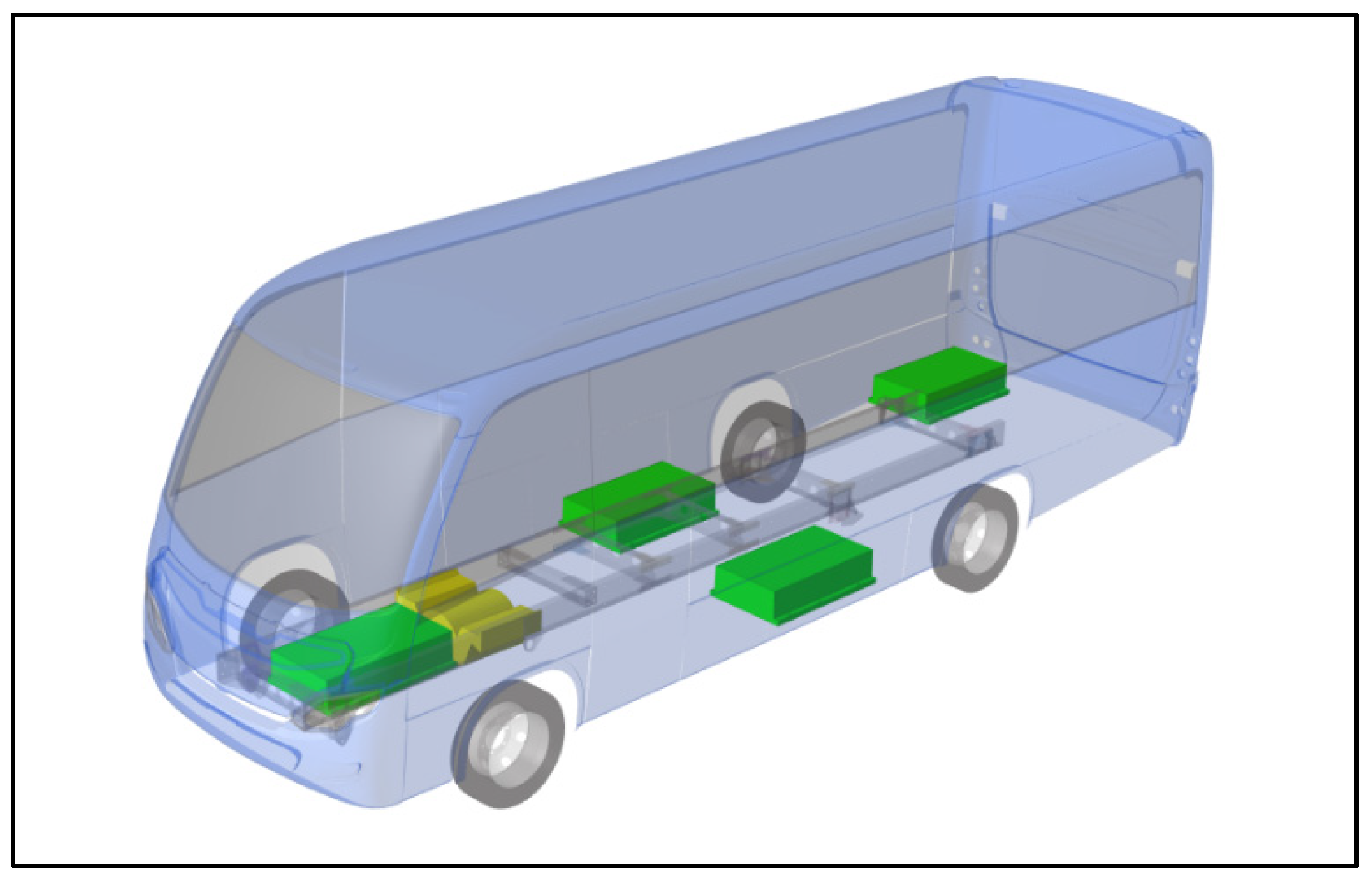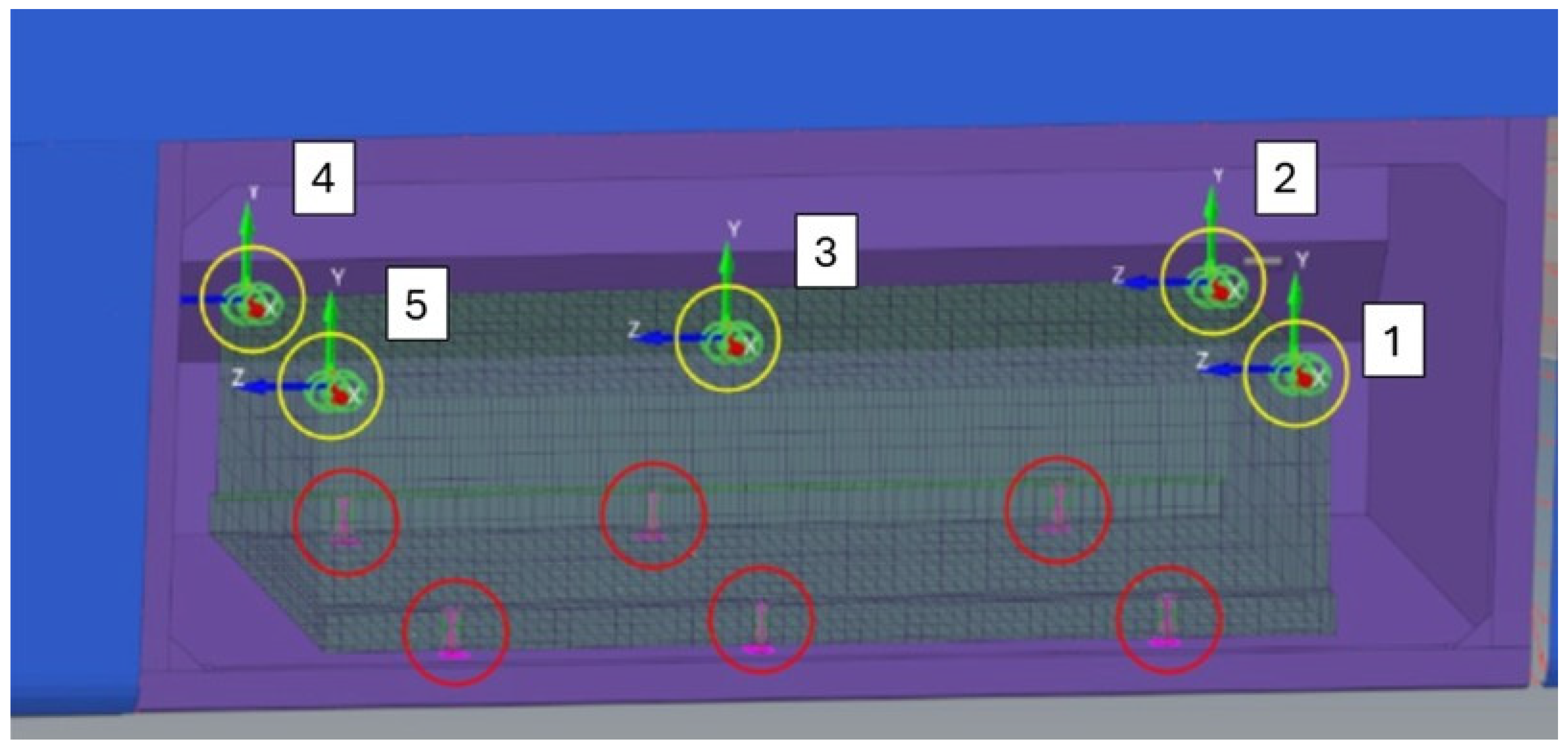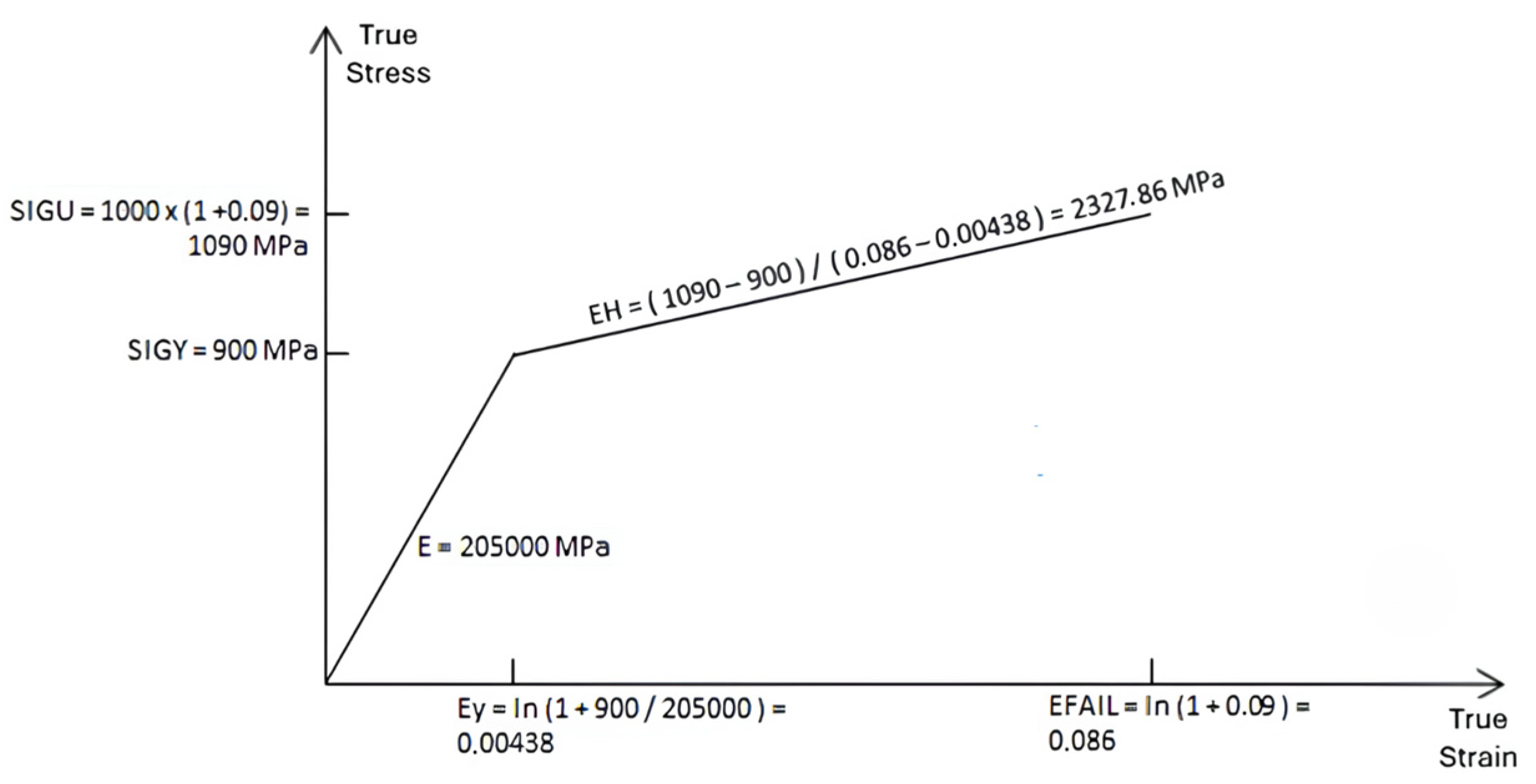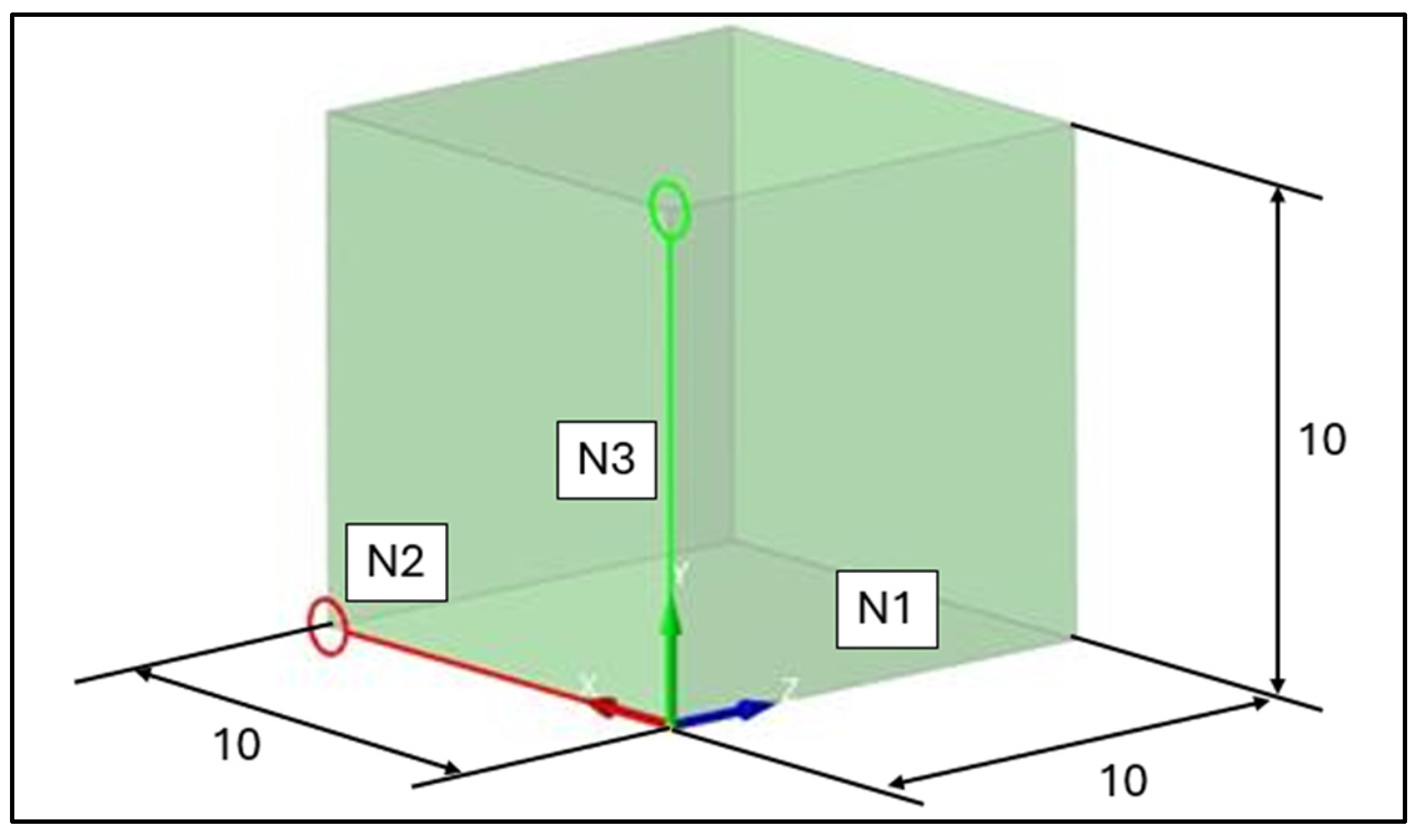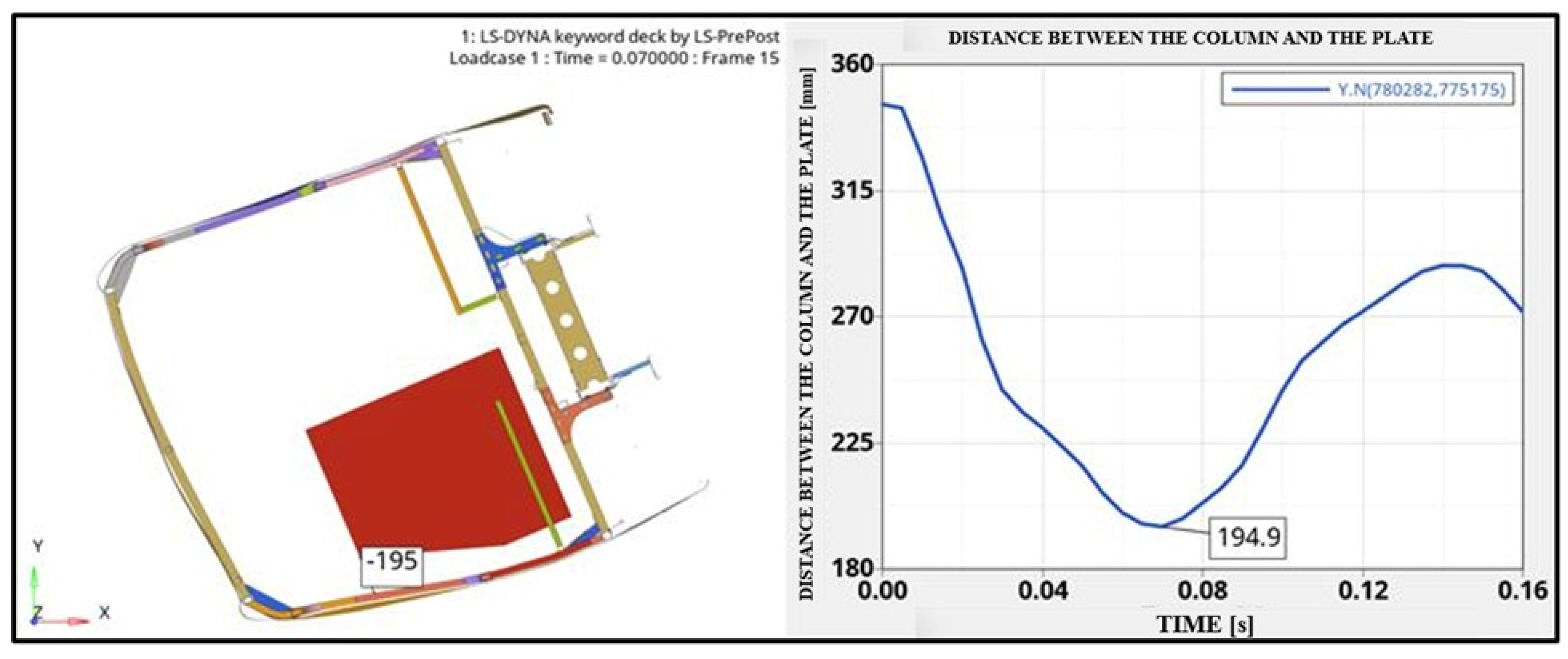1. Introduction
The rapid global growth of electric vehicles (EVs), including battery electric vehicles (BEVs) and hybrid electric vehicles (HEVs), has been a pathway to reducing environmental impact and mitigating climate change. Between 2018 and 2024, EV sales experienced a sharp increase, with a 21% growth rate between 2023 and 2024 alone [
1]. This trend is significant, given the urgency to reduce greenhouse gas (GHG) emissions, which is one of the primary causes of fossil fuel combustion in internal combustion engines [
2,
3]. The global transport sector accounts for approximately 25% of global CO
2 emissions, making fleet electrification a viable solution to reduce CO
2 emissions in this sector [
4]. Specifically, road transportation contributes approximately 21% of CO
2 emissions in the European Union (EU) [
5]. In Brazil, the transport sector accounted for about 49.7% of the total emissions (CO
2eq) in 2024 [
6]. The environmental benefits of adopting BEVs and HEVs include lower tailpipe emissions, improved urban air quality, and reduced reliance on fossil fuels [
7,
8]. It also enables significant CO
2 reductions without requiring immediate, large-scale changes to the refueling network, promoting sustainability in urban public transportation systems [
9].
Globally, more than 40 million BEVs and HEVs were registered by 2023, reflecting a shifting movement toward cleaner mobility solutions [
1]. However, it is a sector that is driven by climate pledges, governmental policies, and incentives. China has committed to peak emissions by 2030, the U.S. aims for half of all new vehicle sales to be zero-emission by that year, and Europe plans for all new vehicles to meet zero-emission standards by 2035 [
10,
11]. In Latin America, according to the E-BUS RADAR platform [
12], the electric bus fleet has grown significantly in recent years. In 2017, there were 725 electric buses in operation, and this number increased to 1363 vehicles in 2019. Growth accelerated further in the following years, reaching 3716 vehicles in 2022 and a total of 5899 electric buses by 2024, comprising 4849 battery-powered buses and 1050 trolleybuses. This progress demonstrates the growing commitment of Latin American cities to sustainable mobility.
Nevertheless, the implementation of these vehicles introduces additional challenges, particularly regarding the battery pack and vehicle safety. One of the most important concerns is about the thermal runaway phenomena, which can cause the fire and explosion of the entire battery pack and vehicle [
13,
14]. The thermal runaway mechanism is reviewed in [
15,
16,
17]. It is possible to define three types of battery abuse that can trigger the thermal runaway phenomena: mechanical, electrical, and thermal. In general, electrical abuse can be controlled by a battery management system that controls the state of charge and state of health of each battery cell and avoids the overcharge or overdischarge of the battery [
18]. The thermal abuse can be minimized by a battery thermal management system, composed of air, liquid, or phase-change material cooling systems that keep the battery pack in a safe temperature range during operation [
19,
20,
21].
On the other hand, mechanical abuse usually occurs by the deformation (collision and crush) or penetration of the battery pack, which favors the internal short circuit and the thermal runaway [
22]. During vehicle collisions, such as impact scenarios (frontal, lateral, rear-end collisions or rollovers), external forces may compromise the integrity of the cells and deform the battery cells. This may result in the tearing of the battery separator, potentially leading to an internal short circuit. Subsequently, the flammable electrolyte may leak, possibly causing a fire, raising temperatures, and initiating uncontrollable exothermic reactions within the battery cells [
15]. The penetration of any object in the battery pack is another phenomenon that might occur during a vehicle accident. In this case, penetration can directly induce an internal short circuit. Metallic object intrusion, severe compression, and structural rupture of the battery modules have been identified as mechanical triggers that can lead to thermal runaway [
23,
24]. Compared to crush conditions, penetration can instantaneously trigger a severe internal short circuit from the onset of the event. In this case, mechanical destruction and electrical shorting occur simultaneously, making penetration abuse conditions more critical than those caused by isolated mechanical or electrical abuse [
15].
Among the bus accidents, bus rollovers are especially dangerous because buses have a high center of gravity, large mass, and wide side profiles, making them highly sensitive to losing stability due to road geometry, adverse weather, and crosswinds, which increases both sideslip and rollover risk [
25]. Moreover, in multi-axle or triaxle buses, the rollover dynamics are more complex than in conventional vehicles, requiring specialized indices and models to capture load transfer and stability limits accurately [
26]. In December 2024, an electric bus in São Paulo toppled during a curve and immediately caught fire, with the flames concentrated near the battery module region [
27]. This bus had its battery pack mounted on the roof, which raised its center of gravity and contributed to the rollover. Although the fire was quickly contained thanks to the vehicle’s on-board safety systems and a prompt emergency response, the incident highlights the increased risks associated with rollover accidents in electric vehicles. In this context, passive safety in electric vehicles (EVs) is an increasingly relevant field of study, particularly due to the structural differences between EVs and conventional vehicles. The absence of an internal combustion engine, for instance, allows for mass redistribution and internal space reconfiguration, directly influencing the vehicle’s behavior in collision scenarios. Among the main associated challenges, the mechanical safety of the battery systems stands out, as these critical components may be exposed to various types of impacts, including frontal, lateral, and rear-end collisions, and especially rollovers [
28]. This necessitates the implementation of specific protection strategies aimed at minimizing structural damage and preventing catastrophic failures within the energy storage system [
23].
To mitigate these risks, electric bus manufacturers have adopted various passive protection strategies. The placement of the batteries plays a crucial role in impact mitigation. While light-duty vehicles commonly utilize T-shaped, rear-mounted, or full underfloor configurations, electric buses typically diverge from these standards [
29]. Due to spatial constraints and the need to maintain passenger capacity, many manufacturers choose to position battery modules on the roof or within elevated rear compartments. This approach facilitates the adaptation of existing platforms and simplifies the integration of passive cooling systems. However, it also introduces new structural challenges in rollover scenarios.
Figure 1 illustrates typical battery placement configurations in commercial electric buses: (a) distributed across the rear and middle sections of the vehicle floor, (b) concentrated in the rear part of the vehicle, (c) distributed across the rear, middle, and front sections of the vehicle floor, and (d) concentrated in the rear part of the vehicle with additional placement on parts of the roof.
In addition to battery placement, the design of protective structures is equally essential. Various solutions have been studied and implemented to safeguard battery systems against external loads, including crash boxes, metallic energy absorbers (such as aluminum foam), honeycomb structures made of composite materials, programmed deformation zones, and multi-layer shielding [
30,
31,
32]. These devices aim not only to protect individual cells but also to prevent localized failures from propagating throughout the entire battery pack [
33]. The integration of such solutions into the bus’s structural architecture helps maintain the system’s integrity, even under severe impact conditions.
In this regard, international regulations play a fundamental role in establishing minimum performance and safety criteria. UNECE Regulation No. 100 addresses the homologation of electric vehicles regarding electrical safety and defines the applicable requirements for rechargeable energy storage systems [
33,
34]. This regulation covers topics such as protection against electric shock, insulation integrity, thermal management, and, notably, the mechanical resistance of batteries. To ensure impact safety, the regulation specifies that the REESS must withstand a defined acceleration plateau (
Figure 2) in three orthogonal axes (longitudinal, transverse, and vertical) without any occurrence of leakage, ignition, or rupture. This validation may be performed using one of three approaches: full-vehicle testing (most representative), testing of representative subassemblies, or laboratory tests using individual cells or modules, as indicated in UNECE Regulation No. R100. The regulation also mandates that the REESS compartment must be isolated from the passenger and driver environment and that the mounting system must remain intact during an impact event, preventing any detachment of the battery system from its designated compartment.
In addition, UNECE Regulation No. 66 specifies the structural resistance requirements for bus bodies in rollover scenarios [
35]. The primary objective of this regulation is to ensure the existence of a survival cell, a structurally protected space designed to preserve the lives of its occupants. This survival cell must withstand critical deformation during ground impact and maintain its internal volume, preventing intrusions that could injure passengers, the driver, or the crew. The longitudinal dimensions of the survival cell extend from 600 mm in front of the driver’s seat to 200 mm beyond the last passenger seat in the vehicle.
Figure 3 illustrates the dimensions and boundaries of this survival cell, also referred to as the residual space [
35,
36].
In the literature, several studies have examined the strength and crashworthiness of conventional bus structures in the context of rollover accidents. However, only a few papers addressed the structure and crashworthiness of electric buses under a rollover scenario following international standards. Kunakron-ong et al. [
37] conducted a detailed finite element analysis to evaluate the electric bus structure with UNECE safety regulations No. 66 and No. 100. In this study, one battery pack was located on the roof, and two battery packs were placed on the floor of the bus. The results demonstrated that the bus design successfully preserved passenger safety space during rollover events. Wicaksono et al. [
38] performed a finite element analysis of an Indonesian conventional bus model under UNECE R66 rollover conditions, assessing both empty and fully loaded scenarios. The study revealed that the bus structure failed to maintain the required residual space, particularly at the cantrail and floor-frame junctions.
Wang et al. [
39] evaluated the rollover safety of an electric bus body frame through simulations of structural strength, stiffness, and modal characteristics under four typical working conditions. However, the position and configuration of the battery pack were not presented. The initial frame satisfied the required performance and rollover safety criteria. Subsequently, a multi-objective optimization model was formulated, resulting in a 240 kg (9.0%) reduction in body frame mass without altering materials, while maintaining structural integrity and safety. Satrijo et al. [
40] conducted a finite element analysis to evaluate the rollover performance of an electric bus frame constructed from alternative lightweight materials under the UNECE Regulation R66 standard. In this work, the authors did not present the position of the battery pack in the simulations. Due to the high weight of electric motors and battery systems, the frame structure was modified and tested using three materials: JIS 3445 STKM 13A, Aluminum 6005A T6, and Aluminum 6061 T6. Battery packs were strategically distributed along the vehicle, with locations including the roof and under the floor. The results demonstrated that Aluminum 6061 T6 provided the best performance in terms of structural deformation, stress distribution, and intrusion resistance.
According to the literature, rollover accidents in electric buses pose significant risks, particularly due to the potential impact or deformation of the battery pack, which can trigger a thermal runaway phenomenon. Although international regulations such as UNECE Nos. 100 and 66 establish minimum safety requirements for electric buses, there is still a lack of studies evaluating how battery pack positioning and structural integration affect rollover safety. This lack of study is important for electric vehicles, since batteries represent both the heaviest component of the vehicle and the most vulnerable to impact. In this context, the objective of this study is to investigate the safety of electric bus batteries during rollover scenarios, following the guidelines established by UNECE Regulations No. 100 and No. 66. Specifically, the study analyzes the influence of uniformly distributing the battery pack beneath the vehicle floor on the bus safety during rollover events. Through virtual simulations and technical evaluations, the study aims to identify potential risks and propose solutions to enhance the safety and structural integrity of electric buses under adverse conditions. Furthermore, the research emphasizes the importance of proper battery positioning and secure mounting as key factors in mitigating the impacts of rollover and ensuring greater protection for both passengers and the environment.
2. Materials and Methods
In this work, the performance of electric bus batteries in rollover scenarios is evaluated in accordance with ECE R66 and R100 standards.
Table 1 summarizes these standards, highlighting their primary focus and key requirements. In particular, the analysis in this work focuses on the mechanical integrity of the bus structure and battery system under rollover conditions. In contrast, electrical safety aspects, such as overcharge, over-discharge, and battery aging, are not considered.
The conformity test as defined by UNECE Regulation No. R66 consists of positioning the vehicle laterally on an inclined platform and releasing it to perform a free rollover, simulating real accident conditions. The calculation of the angular velocity at the moment of impact is based on the principle of energy conservation, as follows:
where
is the potential energy, and
is the kinetic energy of the rotational motion.
Thus, by UNECE Regulation No. 66,
where
is the mass of the unloaded vehicle (mass in running order) in the absence of occupant restraint systems, or
is the total effective mass of the vehicle when restraint systems are present, where
= 0.5.
is the height (in meters) of the vehicle’s center of gravity for the selected mass,
is the perpendicular distance (in meters) from the vehicle’s center of gravity to its longitudinal vertical central plane,
is the perpendicular distance (in meters) from the vehicle’s longitudinal vertical central plane to the axis of rotation used in the rollover test,
is the gravitational constant, and
is the height (in meters) of the vehicle’s center of gravity in its initial unstable position relative to the lower horizontal impact plane.
The kinetic energy of the rotational motion is given by
where
is the moment of inertia of the vehicle concerning the temporary axis of rotation, and
is the angular velocity relative to this temporary axis.
Therefore, by substituting Equations (2) and (3) into Equation (1) and isolating the Variable
, the angular velocity with respect to the axis of rotation at the moment of impact is obtained [
41].
Figure 4 illustrates the main initial conditions of the analysis, showing the trajectory of the center of gravity (CG) from the beginning, through unstable equilibrium, to contact with the ground.
The preparation of the numerical model for analysis using the finite element method was carried out in accordance with the requirements established by UNECE Regulation No. R66. Most of the structural components that make up an electric bus (BE) consist of thin-walled tubes and steel sheets. Therefore, these components were discretized using two-dimensional (2D) shell elements. Components with significant thickness variation, such as cast parts, motors, and batteries, were modeled using three-dimensional (3D) solid elements. One-dimensional (1D) beam elements were also employed to model bolts in bolted joints.
The numerical model comprises a total of 1,635,866 elements and 1,652,844 nodes.
Figure 5 presents the mesh of the discretized bus prepared for simulation.
The materials used for the construction of a bus body—whether powered by internal combustion or electricity—are typically medium-strength, low-carbon steels such as ZAR230 and ZSTE380.
Table 2 below presents their main mechanical properties, where Sy denotes the yield strength, Su the ultimate tensile strength, and Elong the material elongation.
The numerical model was previously studied and compared with experimental data. The maximum equivalent plastic deformation, defined by the PSFAIL parameter, was adopted as the failure criterion for these materials. This criterion works by monitoring the element’s effective plastic deformation and deactivating it once the limit value is reached. Since damage begins at the point of maximum stress, with necking, the deformation corresponding to each material’s maximum point is used. The deformation modes of bus structures were analyzed to obtain more accurate results. Sordi [
42] performed three-point numerical calibration tests, achieving an error level of only 7.99%, which accurately represents the deformation of tubes and thin sheets where plastic hinges are formed. Similarly, Menino et al. [
43] presented excellent numerical correlations, with an average error of 9%.
An electric bus can feature various configurations and placements of battery modules, depending on the vehicle design and intended application. In the model analyzed in this study, the batteries are located in the lower floor area, which helps lower the vehicle’s center of gravity. Specifically, one battery is positioned at the front, two are located in the central region, one on the right side and one on the left, and one is at the rear of the vehicle. These modules are highlighted in green in
Figure 6, facilitating the visualization of their distribution along the chassis. The current battery arrangement was determined based on the vehicle chassis characteristics, which allows the modules to be installed inside, beneath the floor. This design was carefully created to ensure proper load distribution, maintain vehicle balance, and keep axle stress within the technical limits. This setup aims to meet the project’s structural and operational needs while also considering safety, accessibility, and performance. It is important to emphasize that the analyzed vehicle is a minibus, which presents significant spatial restrictions that make alternative battery placements impractical within the current configuration. For this reason, the battery pack was considered in a single location in our simulations.
As shown in
Figure 7, each battery module in the analyzed model has six attachment points to the vehicle, highlighted in red. These points were modeled using 1D elements [
29]. The bolt used in this model is an M12, metric, NBR 8855 standard [
44], with class 10.9, where the class defines the tensile strength limit and the yield strength. Considering the first number of the class as “
i” and the second as “
j”, we have
The methodology used [
45] defines the necessary parameters for applying a failure model in the LS-DYNA software, considering the theoretical characteristics of density, Poisson’s ratio, and modulus of elasticity of the steel (E). The input data for the material (MAT_SPOTWELD) are then calculated, as shown in
Figure 8, where SIGY is the yield stress, SIGU is the rupture stress, EY is the deformation corresponding to the yield stress, EFAIL is the deformation corresponding to the rupture stress and failure criterion for the bolt, and EH is the tangent modulus of the plastic region of the material curve. This approach makes it possible to simulate the structural behavior of the connections in rollover scenarios more realistically.
Each battery module was virtually instrumented with five accelerometers, highlighted in yellow (numbered as 1, 2, 3, 4, and 5), strategically distributed to monitor accelerations during the rollover event (
Figure 7). The accelerometers were modeled as hexahedral solid elements (cubes) with dimensions of 10 mm × 10 mm × 10 mm, aligned with the global axes. To ensure higher data accuracy and reduce numerical noise compared to deformable nodes, the accelerometers were rigidly attached to the structure using three nodes, simulating the behavior of real sensors more accurately. The material used was MAT_020 (generic rigid steel), with an approximate mass of 8 g—close to the actual mass of a physical accelerometer (~10 g). The functional definition of the sensors was implemented through the seatbelt accelerometer element, which allows for the extraction of acceleration data from a rigid body containing the three reference nodes. Each accelerometer was placed on flat surfaces of the battery enclosures, with the measurement point located 5 mm from the mounting surface. All accelerometers were connected to the structure through extra nodes. The orientation of the accelerometers is illustrated in
Figure 9, which shows one of the accelerometers in the numerical model.
The numerical model of the vehicle was calibrated to reflect a total mass of approximately 8516 kg. Based on the parameters defined by Equation (2), the energy at the moment of impact was determined, totaling 54.6 kJ. Using Equation (3), which relates potential energy converted into kinetic energy during rollover, the angular velocity was calculated, resulting in an approximate value of 1.90 rad/s.
3. Results and Discussions
The evaluation of the simulation results can be performed in two stages: first, in terms of compliance with the requirements of UNECE Regulation No. 66, and subsequently, with the requirements of UNECE Regulation No. 100.
During the rollover event, it was observed that the region of most significant deformation occurred in the right-side structural ring, within the window bay located after the service door. The initial distance between the column and the plate positioned in this area was 346 mm. At the moment of maximum deformation (approximately 70 ms), this value was reduced to 195 mm.
Figure 10 presents the most critical structural ring during the event, as well as the displacement graph between the plate and the column throughout the lateral rollover. Based on the obtained values, it is possible to state that the vehicle meets the requirements established by UNECE Regulation No. 66, as the residual space was preserved.
Based on the methodology used to evaluate the bolts, none of them reached the maximum limit for triggering the numerical model failure and causing the 1D element to fail.
Figure 11 shows the tensile and shear force graphs for the most loaded joint among the 24 analyzed joints. The maximum forces observed were 11.1 kN in tension and 11.0 kN in shear.
The speed over time was recorded at each virtual element of the seatbelt accelerometer type installed in the REESS assemblies. Based on these data, accelerations were obtained through numerical differentiation, with the application of an SAE 60 low-pass filter to attenuate signal noise. Among the four REESS assemblies installed in the vehicle, the module located in the front section exhibited the highest acceleration amplitudes.
Figure 12 illustrates the dynamic behavior of this specific assembly throughout the rollover scenario.
The analysis of
Figure 12 enables the observation of the resulting accelerations in the front REESS assembly during the simulated rollover event, conducted in accordance with UNECE Regulation No. R66. The colored curves plotted alongside the normative plateaus (Lines 1 to 5) represent each accelerometer positioned in the battery module, following a numerical order for easier understanding, as shown in
Figure 7. At the same time, the red and blue envelopes indicate the lower and upper limits defined by UNECE Regulation No. 100 for battery safety validation. It is noted that, although some curves exceed these limits at specific time intervals, the signals do not exhibit well-defined acceleration plateaus, which is a fundamental condition required by UNECE Regulation No. 100 for the application of acceptance criteria. Due to the absence of such plateaus, the data obtained from the rollover simulation, although compliant with UNECE Regulation No. 66, is not sufficient to validate the acceleration requirements established by UNECE Regulation No. 100. Even if the parameters used in the analysis were changed, such as increasing the angular velocity to amplify the accelerations reaching the batteries, it is not possible to predict controlled behavior at the acceleration levels specified in UNECE Regulation No. 100 due to the nonlinearities involved in the analysis, such as structural deformation and the movement’s kinematics when the vehicle touches the ground. This finding highlights the importance of employing additional or scenario-specific evaluation methods in rollover situations when compliance with both regulations is desired.
4. Conclusions
This paper presents the structural performance of rechargeable energy storage systems in electric buses under rollover conditions according to UNECE Regulations No. 100 and No. 66. In general, the results indicate that the integrity of the survival cell was preserved, as required by UNECE Regulation No. 66, indicating a body design appropriate for occupant protection. The central deformation zone, identified in the right-side structural ring, remained within admissible limits, ensuring the maintenance of the residual space necessary for the physical integrity of passengers and crew.
Regarding the performance of rechargeable energy storage systems, the maximum tensile and shear force values identified at the bolted joints enabled a detailed assessment of the battery module’s fixation integrity. The measured forces—11.1 kN in tension and 11 kN in shear—are consistent with the holding capacities of bolts of appropriate grade, thus ensuring that the compartments did not shift or detach during impact, as established by UNECE Regulation No. 100.
Virtual instrumentation using accelerometers allowed for the collection of precise acceleration data for each REESS module, providing essential input for future research on structural fatigue, dynamic behavior, and cumulative impact effects. The use of the SAE 60 filter verified the reliability of the recorded signals, showing that the battery pack located at the front was most vulnerable to higher acceleration amplitudes. These results suggest the need for localized reinforcement or a review of the battery layout, especially for vehicles traveling on rough terrain or high-risk routes. It is important to note, however, that the acceleration data collected from the rollover simulation were insufficient to fully verify compliance with the criteria set by UNECE Regulation No. 100, as there was no apparent acceleration plateau. Therefore, it is advisable to develop additional or specific testing methods for rollover scenarios to ensure compliance with both regulations.
Additionally, it is important to note that the results shown in this study are specific to the particular minibus model and its configuration with batteries placed in the lower floor area. Using different structural setups, such as rooftop or elevated battery modules, could substantially alter the rollover behavior, acceleration performance, and required safety and mounting measures. As a result, broad conclusions should be approached with caution, and it is advisable to perform detailed analyses for each unique vehicle design.
Future research could extend our work by exploring alternative battery module layouts, connector materials, and dimensional configurations, enabling broader applicability beyond the specific design considered here. Furthermore, optimization studies on battery pack positioning and fastening strategies under different chassis architectures would provide more general insights into electric vehicle safety and structural integration. Finally, rear- and side-impact collisions can also compromise the integrity of bus batteries, depending on their location within the vehicle. However, such collisions are not currently regulated. Therefore, it is recommended that these scenarios be incorporated into future regulations, ensuring that manufacturers adopt passive safety measures to protect these areas.

